Abstract
Background
The aim of this case–control study was to explore the association by gender between the HTR2C gene variants and suicidal behavior in a Mexican population.
Subjects and methods
A total of 183 suicide attempters and 208 healthy volunteers were included in this study. We genotyped five polymorphisms of HTR2C (rs547536, rs2192372, rs4272555, rs6318, and rs2428707), then measured the association by genotype, allele, and haplotype.
Results
In the female group, we found an association between two polymorphisms of the HTR2C (rs4272555 and rs2428707) and suicide attempts. The C allele of the single-nucleotide polymorphism (SNP) rs4272555 was associated with a decreased risk of suicide attempt (P=0.01, odds ratio =0.26, 95% confidence interval: 0.09–0.79), whereas the G allele of the SNP rs2428707 was associated with an increased risk of suicide attempt (P=0.01, odds ratio =3.68, 95% confidence interval: 1.24–10.90). No significant association was observed between the other polymorphisms studied (rs547536, rs2192372, rs6318) or haplotypes with suicide attempts.
Conclusion
These findings suggest a possible risk factor of the HTR2C gene in the pathology of suicidal behavior in Mexican population. More studies are necessary to confirm this association.
Introduction
Suicide is one of the leading causes of death throughout the world; it ranks among the top 10 causes of death for individuals of all ages and is the leading cause of death in males under 35 years old.Citation1,Citation2
A decrease in the concentrations of serotonin metabolites (in particular the serotonin 5-hydroxyindoleacetic) in patients with suicide behavior (suicide attempt and suicide) suggests that the serotonergic system is associated with suicide behavior.Citation3,Citation4 Studies have consistently proposed that genes of the serotonergic system could play an important role in suicide.Citation5,Citation6 For example, in SH-SY5Y cells, the administration of human interferon-alpha modifies the HTR2C mRNA editing, and this could be a mechanism of drug-induced depression or suicidal side effects in humans.Citation7,Citation8 It has also been proposed that the serotonin receptor 2C (HTR2C) geneCitation9,Citation10 contributes to suicide behavior.Citation11
The HTR2C belongs to the family of 5-HT2 receptors, which has three members: 5-HT2A, 5-HT2B, and 5-HT2C.Citation1 The gene that encodes the HTR2C is located on the long arm of the X chromosome at position 24; and it contains six exons and five introns, spanning at least 230 kb.Citation12 One of the most common variants of the HTR2C is the Cys23Ser (rs6318), which is a functional polymorphism (C/G at position 68) that results in the substitution of cysteine for serine at position 23 of the N-terminal extracellular domain.Citation2,Citation13,Citation14 In the last few years, several authors have reported an association between the HTR2C polymorphism and suicidal behavior.Citation15 Furthermore, in analyses performed by gender, a negative association has been observed between the HTR2C polymorphism and suicidal behavior.Citation14,Citation16 Other polymorphisms of HTR2C that also have been studied in suicide behavior are rs547536, rs2192372, rs2428707, and rs4272555;Citation14 however, no association has been established in several populations. Therefore, the association between the HTR2C gene remains controversial, given that the available case–control studies have obtained both positive and negative findings.Citation13–Citation15,Citation16–Citation20 In addition, to date, the relationship between the HTR2C gene and suicide behavior in the Mexican population has not yet been studied.
As the HTR2C gene is located on chromosome X, the objective of this work was to analyze the association by gender between five genetic variants of HTR2C gene, rs547536, rs2192372, rs6318, rs2428707, and rs4272555, and suicide attempt in a Mexican population.
Subjects and methods
A total of 187 unrelated patients, of whom 110 (58.8%) were females and 77 (41.2%) were males who had attempted suicide, were included in this study. We defined suicide attempt as a self-harm behavior with at least some intent to end one’s life. The subjects were recruited from the outpatient service of the General Hospital of Comalcalco in the state of Tabasco, Mexico. We also included 223 healthy subjects as controls (146 females [65.5%], 77 males [34.5%]) who were recruited from the blood donor center at the same hospital. We want to emphasize that all the individuals in this study were exclusively from Comalcalco and had parents and grandparents of Mexican origin so as to reduce ethnic variation and stratification effects. However, markers of ancestry were not tested.
All patients who had attempted suicide between January 2013 and December 2013 were included. We considered as exclusion criteria patients who had an organic disorder or self-injury behavior, patients who had concomitant diagnoses of mental retardation or drug dependence, and patients with somatic or neurological illnesses that impaired psychiatric evaluation.
Clinical evaluation
All the individuals (suicide patients and healthy subjects) were evaluated by trained psychiatrists or clinical psychologists with a Master’s degree as the minimum education level. For all of them, the lifetime diagnoses were determined using the Diagnostic and Statistical Manual of Mental Disorders – Fourth Edition (DSM-IV) criteria following appropriate interviews (Structured Clinical Interview for DSM-IV [SCID] I and II).Citation21 The suicide patients were classified in one of the following psychiatric diagnoses: schizophrenia spectrum disorders n=32 (17.1%), mood disorders n=59 (31.5%), stress-related disorders n=73 (39.0%), and substance-related disorders 23 (12.4%).
Ethics statement
Written informed consent was obtained from all subjects after the procedures had been fully explained to them. The subjects did not receive any economical remuneration. The study was approved by the local Ethics and Research Committee of División Académica Multidisciplinaria de Comalcalco (DAMC)-Universidad Juárez Autónoma de Tabasco (UJAT) (UJAT-DAMC-2012-02). The study was performed in compliance with the ethical standards of the 1964 Declaration of Helsinki.
Genotype assays
Genomic DNA was isolated from whole blood samples using standard procedures that have been previously reported.Citation9,Citation22 Genotyping of the HTR2C variants rs547536, rs2192372, rs4272555, rs6318, and rs2428707 was performed using the TaqMan® (Applied Biosystems Inc, Foster City, CA, USA) SNP Genotyping Assay obtained from Applied Biosystems. We followed the manufacturer’s genotyping protocol. We selected five single-nucleotide polymorphisms (SNPs) of the HTR2C gene found in the promotor and introns of the gene ().
Table 1 HTR2C variants considered in the present case–control study in a Mexican population
Statistical analysis
First, the Hardy–Weinberg equilibrium for the HTR2C variants was determined using Pearson’s goodness of fit χ2 test. For female controls, the genotype frequencies of rs6318, rs2428707, and rs4272555 did not deviate from Hardy–Weinberg equilibrium (P>0.05); however, the genotype frequencies of rs547536 and rs2192372 did deviate from Hardy–Weinberg equilibrium (P<0.05). The observed deviations were not likely to be due to laboratory error. Random blind duplicates of up 30% of the samples were used as a quality control measure, and we obtained consistent results.
Then, χ2 and Fisher’s exact tests were used to compare the genotype and allele frequencies between cases and controls. Finally, the Haploview 4.2 (Broad Institute, Cambridge, MA, USA)Citation23 was employed to calculate the linkage disequilibrium (LD) of the markers. The level of significance was set at 0.05. For multiple comparisons, the significance level was set at P=0.016 (0.05/5) using Bonferroni correction. We included five SNPs in the analysis.
Results
SNP association analysis
The demographic characteristics of the cases (mean age: 25.96 years, standard deviation [SD]: 9.26 range: 14–56 years) and comparison group (mean age: 31.95 years, SD: 13.03 range: 14–61 years) in this Mexican population are presented in .
Table 2 Sociodemographic features of controls and suicide attempters in a Mexican population
shows the genotype and allele frequencies of the HTR2C variants rs547536, rs21923372, rs6318, rs2428707, and rs4272555 in the suicide attempters and control groups. The HTR2C variants rs4272555 and rs2428707 were significantly associated with suicide attempt in this Mexican population. In the female group, the G allele of the SNP rs2428707 was associated with an increased risk of suicide attempt (P=0.01, odd ratio [OR] =3.68, 95% confidence inrterval [CI]: 1.24–10.90), while the C allele of the SNP rs4272555 was associated with a decreased risk of suicide attempt (P=0.01, OR =0.26, 95% CI: 0.09–0.79). The distributions of the HTR2C variants rs547536, rs21923372, and rs6318 were not significantly different between the subjects with suicidal behavior and the control group (). Subsequently, for the SNPs that showed a significant association, we summarized the evidence and performed a meta-analysis. The results of the meta-analysis (Supplementary materials) showed a nonsignificant association for the rs2428707 (fixed effects: OR: 1.21, 95% CI: 0.80–1.82, P(Q)=0.03) and for the rs4272555 (fixed effects: OR: 0.56, 95% CI: 0.16–1.94, P(Q)=0.03) (– and and ).
Table 3 Genotype and allele distributions of HTR2C variants in a Mexican population
Haplotype association analysis
The LD (linkage disequilibrium) in this Mexican population was measured for all markers examined in this case–control study (rs547536, rs2192372, rs6318, rs4272555, and rs2428707). Block 1 () shows the LD measurements. We conducted a haplotype analysis of the same five markers and did not find a significant association between suicide attempt and any of the examined haplotypes (P>0.01, ).
Figure 1 LD in HTR2C markers (rs547536, rs2192372, rs4272555, rs6318, and rs2428707) in suicide attempters and controls in a Mexican population.
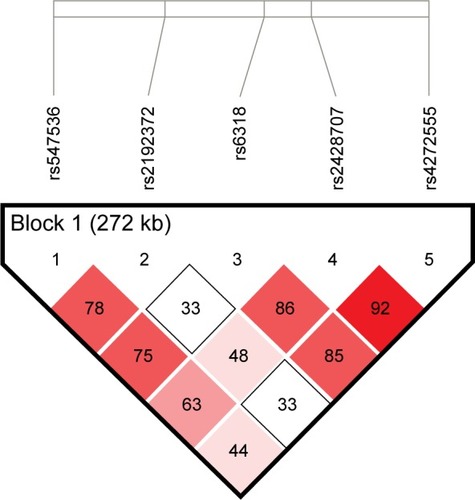
Table 4 Haplotypes for HTR2C markers rs547536 (A/G), rs2192372 (A/T), rs4272555 (C/T), rs6318 (C/G), and rs2428707 (A/G) in controls and suicide attempters
Discussion
The aim of the present study was to assess the association between the HTR2C variants rs547536, rs2192372, rs6318, rs2428707, and rs4272555 and suicide attempt in a Mexican population. To our knowledge, this is the first association analysis between HTR2C polymorphisms and suicidal behavior performed in a Latin American population. We found that the G allele of rs2428707 was associated with an increased risk of suicidal behavior in females; however, this is not similar to the results of previous studies.Citation14,Citation20 This discrepancy could be due to differences of the sample sizes used. The number of control subjects used in those previous studies and our study were similar; however, the number of cases in our study were fewer than what the German and Italian populations used in previous studies.Citation14,Citation20 Another possible explanation for this discrepancy is the heterogeneity between the studies. In our study, the absence of the A allele of rs2428707 and the T allele of rs4272555 in the female group, could be ethnic-dependent because the allelic and genotypic distributions we observed were different from those reported in the literature.Citation14,Citation20 Third, the “positive results” of this study are modest because we did not exclude the presence of false positives, even when the results were corrected by Bonferroni’s. For major evidence, we performed a meta-analysis that included studies that have been reported up to date and observed a no-association. However, we considered that the low number of studies, the low number of samples, and the presence of heterogeneity in the analysis reduced the statistical power to detect a possible association between the HTR2C polymorphisms and suicidal behavior. In consequence, more studies that analyze this association are needed.
Our analysis also showed an opposite effect for the rs4272555 and suicide; we observed that in females, the C allele of the rs4272555 is a protective allele against suicidal behavior. It is fundamental to consider these findings with caution for the following reasons: First, the LD analysis indicated stronger linkage disequilibrium for rs2428707 and rs4272555 than for the other HTR2C variants. Second, the small sample size of our study may have resulted in a weaker statistical association than other studies with a larger study population. Therefore, it is necessary to analyze other populations and increase the sample size, without the presence of the heterogeneity, in order to have conclusive results.
The HTR2C Cys23Ser (rs6318) polymorphism is perhaps the most extensively studied for a possible association with suicidal behaviorCitation11,Citation13,Citation14,Citation17–Citation20 and self-injury.Citation24 The present study did not find an association between the HTR2C Cys23Ser (rs6318) and suicidal behavior. However, this finding is in accordance with previous studiesCitation14,Citation20 performed in Caucasian and Chinese populations.Citation18,Citation19 In contrast, in a recent study by Karanovic et al,Citation11 an association between the C allele of HTR2C rs6318 and suicide attempt was observed. Karanović et alCitation11 included 165 suicide attempters and 188 controls, which is similar to what we used in the present study; however, their controls were subjects with psychiatric diseases other than suicidal behavior and our controls were subjects without any psychiatric disorders. Hence, these findings need to be replicated before any strong conclusions can be drawn.
The results of our study should be interpreted in the context of its limitations. Studies using larger samples are necessary to identify small effects related to these polymorphisms. Second, although we perform a Bonferroni correction and performed a meta-analysis, the small sample size and the small number of the studies (respectively) do not ensure the absence of false positives. Finally, we did not analyze the clinical features of suicide attempters that may predispose them to this behavior.
Conclusion
Our results suggest an association between the rs2428707 and rs4272555 polymorphisms of HTR2C in Mexican females with suicidal ideation. Future research must examine the potential mediating effects of the HTR2C gene variants to highlight the importance of the serotonin system in suicidal behavior, with special focus on the receptor gene HTR2C.
Acknowledgments
The data collection and the genotyping of the individual samples were performed with the support from CONACYT (CB-2012-177459).
Supplementary materials
Figure S1 OR and forest plot for the meta-analysis of rs2428707.
Note: G allele vs A allele with heterogeneity.
Abbreviations: OR, odds ratio; CI, confidence interval.
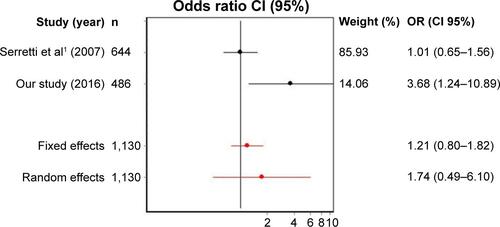
Figure S2 Egger’s funnel plot indicating publication bias for studies included in the meta-analyses.
Note: G allele vs A allele with heterogeneity.
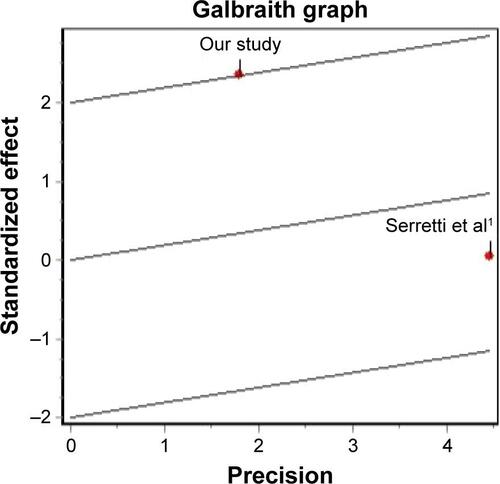
Figure S3 OR and forest plot for the meta-analysis of rs4272555.
Note: T allele vs C allele with heterogeneity.
Abbreviations: OR, odds ratio; CI, confidence interval.
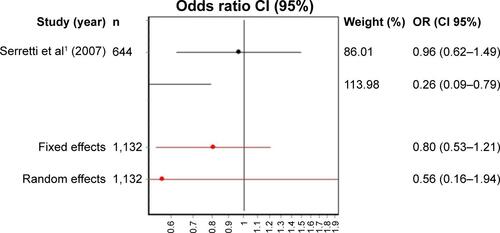
Figure S4 Egger’s funnel plot indicating publication bias for studies included in the meta-analysis of rs4272555.
Note: T allele vs C allele with heterogeneity.
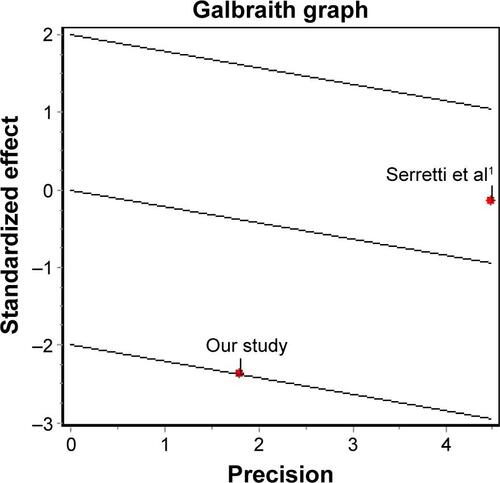
Table S1 Descriptive characteristics of two studies analyzing the role of the HTR2C gene variant rs2428707 in suicide attempt
Table S2 Descriptive characteristics of two studies in the meta-analysis of the HTR2C gene variant rs4272555 in suicide attempt
Reference
- SerrettiAMandelliLGieglingIHTR2C and HTR1A gene variants in German and Italian suicide attempters and completersAm J Med Genet B Neuropsychiatr Genet2007144B329129917192951
Disclosure
The authors report no conflicts of interest in this work.
References
- AntypaNSerrettiARujescuDSerotonergic genes and suicide: a systematic reviewEur Neuropsychopharmacol201323101125114223742855
- MandelliLSerrettiAGene environment interaction studies in depression and suicidal behavior: an updateNeurosci Biobehav Rev20133710 Pt 12375239723886513
- NordstromPSamuelssonMAsbergMCSF 5-HIAA predicts suicide risk after attempted suicideSuicide Life Threat Behav1994241197515519
- RoyAAgrenHPickarDReduced CSF concentrations of homovanillic acid and homovanillic acid to 5-hydroxyindoleacetic acid ratios in depressed patients: relationship to suicidal behavior and dexamethasone nonsuppressionAm J Psychiatry198614312153915452431628
- OquendoMAGalfalvyHSullivanGMPositron emission tomographic imaging of the serotonergic system and prediction of risk and lethality of future suicidal behaviorJAMA Psychiatry201673101048105527463606
- Gonzalez-CastroTBJuarez-RojopILopez-NarvaezMLTovilla-ZarateCAAssociation of TPH-1 and TPH-2 gene polymorphisms with suicidal behavior: a systematic review and meta-analysisBMC Psychiatry20141419625005534
- CavarecLVincentLLe BorgneCIn vitro screening for drug-induced depression and/or suicidal adverse effects: a new toxicogenomic assay based on CE-SSCP analysis of HTR2C mRNA editing in SH-SY5Y cellsNeurotox Res2013231496222528247
- IwamotoKKatoTRNA editing of serotonin 2C receptor in human postmortem brains of major mental disordersNeurosci Lett2003346316917212853111
- Gonzalez-CastroTBTovilla-ZarateCJuarez-RojopIAssociation of the 5HTR2A gene with suicidal behavior: case-control study and updated meta-analysisBMC Psychiatry2013132523311440
- BedenOSenolEAtaySTPH1 A218 allele is associated with suicidal behavior in Turkish populationLeg Med (Tokyo)201621151827497328
- KaranovićJŠvikovićSPantovićMJoint effect of ADARB1 gene, HTR2C gene and stressful life events on suicide attempt risk in patients with major psychiatric disordersWorld J Biol Psychiatry201516426127125732952
- FinderSGSNPper – Gene Finder, 2016 Available from: http://snpper.chip.org/bio/snpper-enter-geneAccessed 31 August 2016
- De LucaVTharmaligamSStraussJKennedyJL5-HT2C receptor and MAO-A interaction analysis: no association with suicidal behaviour in bipolar patientsEur Arch Psychiatry Clin Neurosci2008258742843318504633
- SerrettiAMandelliLGieglingIHTR2C and HTR1A gene variants in German and Italian suicide attempters and completersAm J Med Genet B Neuropsychiatr Genet2007144B329129917192951
- TureckiGSequeiraAGingrasYSuicide and serotonin: study of variation at seven serotonin receptor genes in suicide completersAm J Med Genet B Neuropsychiatr Genet2003113640
- JudyJTSeifuddinFMahonPBAssociation study of serotonin pathway genes in attempted suicideAm J Med Genet B Neuropsychiatr Genet2012159B111211922170779
- VideticAPeterneljTTZupancTBalazicJKomelRPromoter and functional polymorphisms of HTR2C and suicide victimsGenes Brain Behav20098554154519496825
- ZhangJShenYHeGLack of association between three serotonin genes and suicidal behavior in Chinese psychiatric patientsProg Neuropsychopharmacol Biol Psychiatry200832246747117964050
- StefuljJButtnerAKubatM5HT-2C receptor polymorphism in suicide victims. Association studies in German and Slavic populationsEur Arch Psychiatry Clin Neurosci2004254422422715309390
- SerrettiACalatiRGieglingIHartmannAMMollerHJRujescuDSerotonin receptor HTR1A and HTR2C variants and personality traits in suicide attempters and controlsJ Psychiatr Res200943551952518715570
- FirstMSpitzerRGibbonMWilliamsJStructured Clinial Interview for DSM-IV-R Axis I Disorders (SCID-I), Clinican Version, Users GuideArlington, TXAmerican Psychiatric Press, Inc1996
- Gonzalez-CastroTBTovilla-ZarateCAJuarez-RojopIAssociation of 5HTR1A gene variants with suicidal behavior: case-control study and updated meta-analysisJ Psychiatr Res201347111665167223911056
- BarrettJCFryBMallerJDalyMJHaploview: analysis and visualization of LD and haplotype mapsBioinformatics200521226326515297300
- PooleyECHoustonKHawtonKHarrisonPJDeliberate self-harm is associated with allelic variation in the tryptophan hydroxylase gene (TPH A779C), but not with polymorphisms in five other serotonergic genesPsychol Med200333577578312877392
- Bioinformatics ToolsCHIP Bioinformatics Tools Available from http://snpper.chip.org/Accessed February 17, 2017

